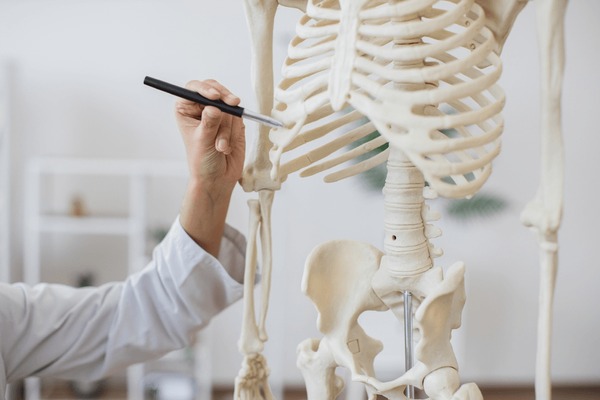
As we age, joint pain becomes one of the most common problems we face. Growing older comes with its own set of challenges, and it’s not just about joint pain. Our bodies, including our bones, go through a variety of changes. While we often assume that these issues are simply the effects of aging, it’s important to recognize that they may sometimes be the result of bone diseases. These diseases can either be genetic or develop over time due to lifestyle factors that were not addressed at an earlier age. In this article, we will explore bone diseases, how they affect our lives, and discuss some rare bone diseases. We will also examine how these diseases can affect aging and what steps can be taken to combat them.
Bone Diseases List
Bone diseases come in many forms, affecting individuals in different ways. Some of the most common bone diseases include osteoporosis, osteoarthritis, Paget’s disease, and even bone cancer as well while it comes under rare bone diseases it is better to stay informed. Osteoporosis is a condition where bones become fragile and brittle, increasing the risk of fractures. Osteoarthritis is the degeneration of joint cartilage, leading to pain and stiffness in the joints. Paget’s disease, on the other hand, involves abnormal bone growth, which can cause bones to become weak and misshapen. These are just a few examples from the broader bone diseases list that highlight how bone health can deteriorate over time. In addition to these, there are also rare bone diseases that may not be as widely known but can have serious consequences for those who are affected by them.
Rare Bone Diseases
Some bone diseases are less common but still pose significant health risks. One example of a rare bone disease is osteogenesis imperfecta, a genetic disorder that causes bones to break easily due to a collagen defect. Another example is fibrous dysplasia, a condition in which abnormal growth of fibrous tissue can weaken bones and lead to deformities. While these diseases may not affect as many people, they can have a profound impact on quality of life. Recognizing the symptoms early and seeking appropriate treatment is crucial for managing rare bone diseases and preventing further complications. Whether common or rare, bone diseases are often overlooked, but they play a significant role in aging and overall health.
Bone Disease and Gracefully Aging
The million-dollar question is how bone disease affects aging and acts as a barrier to aging gracefully. Most of us often take our bones for granted, thinking of them as just structural support for the body. However, as we age, every part of the body plays an essential role in maintaining health and vitality. Aging gracefully is not just about looking young; it’s about being healthy and strong throughout your life. When bone disease takes hold, it can interfere with your ability to move freely and maintain a high quality of life. Conditions like osteoporosis or osteoarthritis can cause chronic pain and limit your mobility, making it difficult to enjoy activities that once brought you joy. If you’re suffering from a bone disease, how can you expect to age gracefully?
The effects of bone disease on aging are not just physical. When your bones are weak or deformed, it can lead to other health complications, including an increased risk of falls, fractures, and long-term disabilities. These complications can seriously disrupt your ability to maintain an active lifestyle, which is essential for healthy aging. So, while you may be focusing on things like your skin or appearance, neglecting your bone health could be undermining your efforts to age gracefully.
Preventing and Treating Bone Disease for Graceful Aging
While bone disease can undoubtedly affect the aging process, it doesn’t have to control your life. With early detection and proper treatment, you can manage bone disease and continue to live a full, active life. Regular bone health assessments are essential in detecting any signs of bone disease before they become more severe. One effective way to stay on top of your bone health is by enrolling in a longevity program, such as the one offered by top health centers like the anti-aging center that specializes in aging. These programs provide a range of tests, including bone tests, DNA testing, and genetic screening, which help identify potential issues with bone health early on. By understanding your bone health, you can take action sooner and adjust your lifestyle and treatment plans accordingly.
In addition to the tests provided by these programs, a personalized health plan can be created, which includes specific exercises, dietary recommendations, and health supplements tailored to your needs. While these programs, supplements can of course help you but self-care is also necessary. You should look after your health to avoid things that may harm your bones. Stay physically active. This proactive approach to bone health not only helps in managing existing conditions but also in preventing future complications that can arise from untreated bone diseases.
Conclusion
Bone diseases are often a silent threat to aging gracefully. These conditions can negatively impact your mobility, cause chronic pain, and even lead to long-term disability. It’s important to recognize that bone health plays a crucial role in aging, and taking care of your bones should be a priority as you age. Whether it’s osteoporosis, osteoarthritis, or one of the rare bone diseases, early detection and appropriate treatment can significantly improve your quality of life. Regular bone tests, genetic screenings, and personalized longevity health programs by TAC can help manage bone disease and ensure that you continue to live a healthy and active life. Remember, aging gracefully is not just about looking good but about maintaining health and strength in every part of your body, including your bones.
